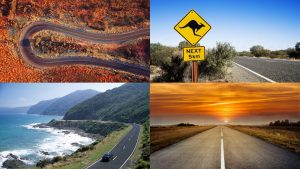Asset-heavy governments across the world set aside an abundance of money and time in managing assets owned by the public, state or government. Government fixed assets like roads, bridges, building structures, military equipment, water systems, power grids, wastewater systems, mechanical systems, vehicles and more remain “fixed” assets because governments put enormous efforts in conserving the conditional health, sustaining the performance and eliminating or mitigating risks of non-current assets.
However, in the long run, these assets deteriorate- in other words, degrade and decline value- with time, which is a huge drawback for public asset managers since replacement, repair and maintenance of such assets takes hoards of public money, time and effort. To add more brunt to this challenge, these infrastructure and assets are instigated for serving expansive communities, therefore, accommodating disparate locations. This is why asset managers of the new age are demanding state-wide visibilities to ensure all assets are interconnected and collectively maintained to meet their best conditional and structural levels despite the impactful changes they undergo dynamically.
This is why having a comprehensive idea of the GIS (Geographical Information System) technology is a key technological advantage for most governmental fixed asset managers. This article discusses the perks of GIS technology and how the government can drive towards a promising asset future by utilising it.
GIS Technology- A Simple Description
GIS Technologies Helping Modern Governments to Improve The Quality Of Life
- Governments use GIS maps to understand and operationalise asset solutions by integrating disparately-sourced data
- GIS maps can be used to incorporate location intelligence to make high-level asset decisions for investing, maintaining, controlling, managing and replacing public assets
- GIS maps are used by governments to get collective insights of all assets classes, including:
– Agriculture Assets
-Aviation Assets
-Defence and Military Assets
-Election Assets
-Emergency Dispatch Assets
-Forestry Assets
-Human Service Asses
-Mining Assets
-National Mapping Assets
-Transportation Assets
-Utility Service Assets (water, wastewater, water recycling, power, gas, oil, waste services and more)
Benefits of GIS Technology for Asset-centric Government Establishments
- Allows assets managers to get useful perspective in mitigating the risk of assets
- Allows teams to presuppose assets events and collaboratively support the civic engagement in extreme asset assets
- Boost the performance, integrity and longevity of assets deployed in massive footprints
- Get comprehensive insights on the total investment paradigms for years ahead for assets instituted critical locations (like urban areas, population-congested areas, wildlife conservation areas and more)
- Guides the assets manager in gathering location-sensitive insights to solve asset-related challenges in pre-time
- It amplifies the use of maps and location technology during asset management strategies
- This technology spurs local asset management initiatives via scalable, sustainable and smart implementation







